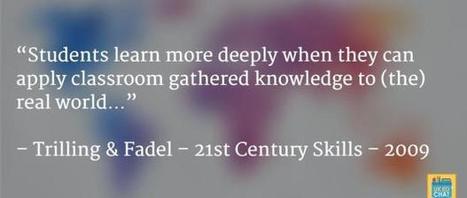Reasons to link learning to the real world
Linking learning in a classroom has further benefits. It will engage the learner by giving them a real reason to have this skill or knowledge. It should not just be for a test that they will have to do! Let’s face it, for a lot of students this will automatically dis-engage them from the subject. On a side note; if learning is always based around having to learn it for the exam then I can say that take up in that subject later in life will become less likely… We all know the students who say that they are not doing this subject or that subject because it is boring! So make it interesting… As a teacher pass on that passion you have for your subject and engage the young person. Again, this can easily be done through a real world context.
Another positive side effect of a young person being engaged in learning is that they will demonstrate a positive behaviour for learning. As a teacher you will start to notice that they are now starting to ask questions (inquire) about the subject or learning outcome. Why not take this further? What about rewarding the learner for asking questions about the real world context, rather than for what they get right? I liken this to being a fisherman. You use the hook (real world context) to catch the fish (learner). Then in order to reel them in you get them to ask questions and then reward them for the question that they ask. All the time that this is happening the fisherman (teacher) is bringing the fish (learner) closer to the shore (learning outcome) through the deep waters (inquiry led deeper learning strategy). This thinking can form the basis of many lesson activities in the classroom.
This is how learners demonstrate deeper learning and it will ultimately ensure that they do not forget that learning. Learning stays in their mind because it has a purpose for them, a real reason to have it. It also creates the spark for them to want to know more.
Learn more:



 Your new post is loading...
Your new post is loading...










Een krachtige leeromgeving moet o.a. ECHT zijn.